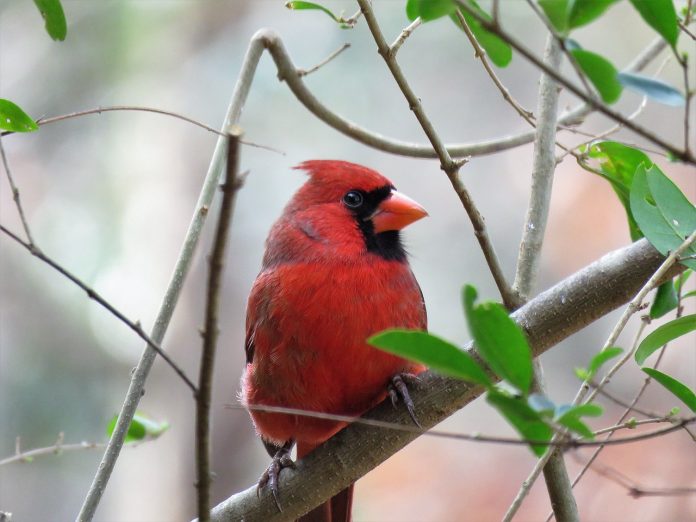Even though the school year had already started and fall sports were in full swing, it didn’t seem like autumn.
Then, I noticed the first tinge of orange color on a tree and was surprised to see leaves scattered on the ground below it. I had to admit that summer had finally ended.
Signs of fall
I usually look at the landscaping around my house for confirmation that it is the beginning of autumn. Sure enough, my fall sedum plants had delicate pink flowers blooming at the top. The burning bush outside my window was tipped with crimson on the outer petals.
My dad planted the burning bush in my yard from a start he had taken from his flowerbed. Growing up, there were two planted in front of my house. I always loved seeing their brilliantly red color in the fall.
The shrub that is often referred to as a burning bush is also known as winged euonymus. It is native to northeastern Asia to central China. It spreads aggressively and could be listed as an invasive species in the future. Just don’t tell the cardinals that live in my yard — it is their favorite place to perch in the winter.
Northern cardinal
The great multitude of northern cardinals in this area is actually due to the variety of landscaping plants. They find cover in the trees and shrubs common in the Midwest. In contrast, the northern cardinal mostly lived in the Southern United States in the 1880s.
The northern cardinal is so well-loved that it is not only the state bird of Ohio but the state bird of seven states total.
The non-migratory bird tends to live its whole life within one mile of its birthplace. The cardinals I see flying around my house season after season, year after year, are probably the same birds. Oh, the stories they could tell about the humans they observe!
Another endearing attribute about cardinals is that they mate for life. Both the male and female sing. The female uses songs to communicate about food to their mate while it is nesting. I have tried singing for food, but it doesn’t work as well for me as the female cardinal.
Cardinals usually nest in dense foliage. They lay eggs 2-3 times a year and have anywhere from two to five eggs in a brood. The nest that takes 3-9 days to build is only used for one round of eggs.
Unusual looks
In the late summer and into early fall, some cardinals sport a very unattractive look. They are bald as a result of an unusual molting period.
They shed their feathers like other songbirds, but sometimes spontaneously lose all the feathers on their head. It most commonly happens to juveniles during their first prebasic molt.
Northern cardinals have black skin, any other color on their head is an indicator of an ailment instead of molting.
There’s another unusual look for a cardinal that is extremely rare to see. Some northern cardinals have golden feathers instead of the typical red. When typical red coloration is replaced with hues of yellow or orange, it is referred to as xanthochroism.
The northern cardinal gets its signature red color as a result of ingesting plants and insects containing carotenoids. Most likely, xanthochroism is the result of a genetic mutation in which the enzyme is missing to convert yellow pigments from their diet into red plumage.
In a normal cardinal, a lack of foods containing carotenoids can sometimes give the red feathers a brownish tinge.
Some people look at cardinals as a reminder of loved ones who have passed. It is comforting to see them when facing difficult times and also during times of celebration. They are tiny messengers of hope that thrive during all of Ohio’s four seasons.













